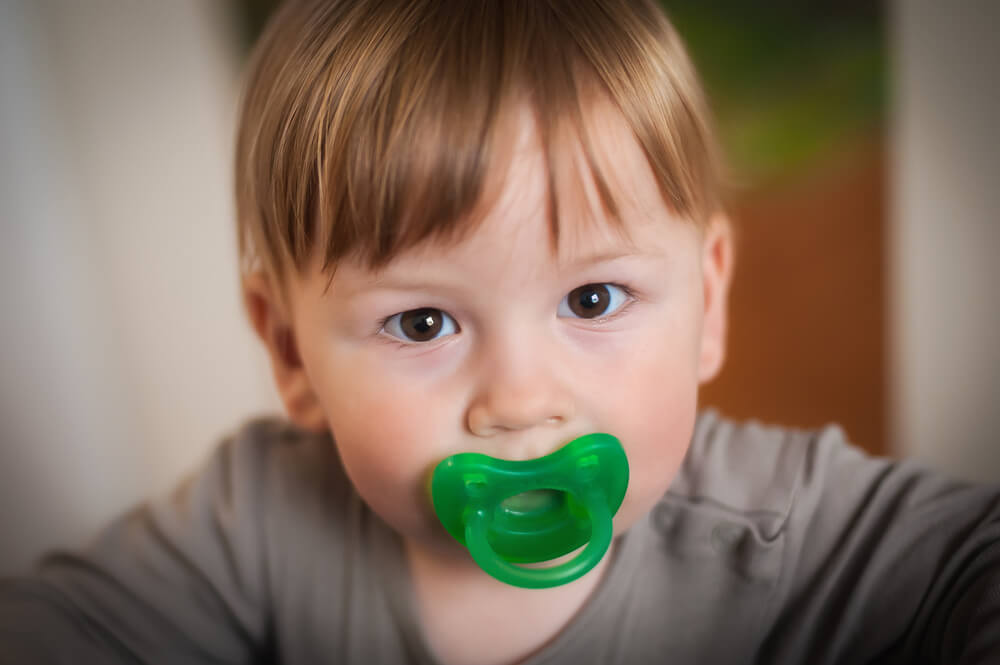Pacifiers can provide comfort to babies, but prolonged pacifier use can change the shape and alignment of your baby’s teeth–leading to what’s known as “pacifier teeth.” To avoid long-term issues, it’s important to learn how to fix pacifier teeth.
What Are Pacifier Teeth?
The term “pacifier teeth” refers to dental issues caused by long-term pacifier use. Babies who suck on pacifiers for an extended period, especially beyond age two, may develop tooth alignment issues.
The constant pressure from sucking can push the upper teeth forward or cause the lower teeth to tilt inward. This can lead to an open bite, where the upper and lower front teeth don’t touch when the mouth is closed. It can also lead to a crossbite, where the upper teeth sit inside the lower teeth.
Do You Need To Fix Pacifier Teeth?
Parents often wonder if pacifier teeth will fix themselves once their child stops using a pacifier. In some cases, mild changes to the alignment of baby teeth may resolve naturally once pacifier use stops. Baby teeth have some flexibility, and the pressure caused by the pacifier may correct itself as the child grows and their adult teeth start coming in.
More severe cases, such as a significant open bite or crossbite, are less likely to resolve on their own. These conditions can continue to affect the way the adult teeth erupt, leading to long-term orthodontic problems.
What Treatments Are Available for Pacifier Teeth?
Orthodontic treatments are available if your child’s teeth haven’t gone back to normal after pacifier use. Treatments include braces, palatal expanders, and retainers.
Braces
If your child has developed an open bite, a crossbite or other alignment issues due to pacifier use, braces can be an effective solution. Braces can help guide the teeth into their proper positions and correct bite problems. Your orthodontist will assess whether your child needs braces and recommend the best course of action.
Palatal Expanders
In cases where the upper jaw has been affected by prolonged pacifier use, a palatal expander may be needed. This device gradually widens the upper jaw to create more space for the teeth and improve the alignment of the bite.
Retainers
After any orthodontic treatment, such as braces, retainers are often used to maintain the results and prevent the teeth from shifting back to their previous positions. This helps ensure that any corrections made to pacifier teeth are long-lasting.
When Should Parents Visit the Orthodontist?

Monitor your child’s dental development and act quickly if you notice any alignment issues after pacifier use.
Signs you need braces can vary, but if your child’s teeth don’t meet properly, the child struggles with chewing, or their teeth seem crowded or misaligned, it may be time to seek orthodontic treatment. Early intervention can correct problems more easily and potentially reduce the amount of time your child needs braces or other treatments later on.
We Can Help Fix Pacifier Teeth
We at Peterson Family Orthodontics are committed to providing top-notch orthodontic care in a welcoming and family-friendly environment. If you’re wondering how to fix pacifier teeth, contact us today for a free consultation.

